eLearning Log in
Login here using your username and password
Quality Management Approach
Purpose
A quality management approach describes how quality will be managed on the project. This includes the specific processes, procedures, techniques, standards and responsibilities to be applied.
Composition
A quality management approach includes the following:
- Introduction - States the purpose, objectives and scope, and identifies who is responsible for the approach
- Quality management process or procedure - A description of (or reference to) the quality management procedure to be used. Any variance from corporate, programme management or customer quality standards should be highlighted, together with a justification for the variance. The process or procedure should cover:
- quality planning
- quality control: the project’s approach to quality control activities. This may include:
- quality standards
- templates and forms to be employed (e.g. product description(s), quality register)
- definitions of types of quality methods (e.g. inspection, pilot)
- metrics to be employed in support of quality control
- project assurance: the project’s approach to project assurance activities. This may include:
- responsibilities of the project board
- compliance audits
- corporate, programme management or customer reviews
- Tools and techniques - Refers to any quality management systems or tools to be used, and any preference for techniques which may be used for each step in the quality management procedure
- Records - Definition of what quality records will be required and where they will be stored, including the composition and format of the quality register
- Reporting - Describes any quality management reports, including their purpose, timing and recipients
- Timing of quality management activities - States when formal quality management activities are to be undertaken (e.g. during audits, when this may involve reference to the quality register)
- Roles and responsibilities - Defines the roles and responsibilities for quality management activities, including those with quality responsibilities from corporate, programme management or the customer.
Derivation
A quality management approach is derived from the following:
- Project Board
- Project Brief, including:
- the project management team structure (for roles and responsibilities)
- the project product description (for the customer’s quality expectations and acceptance criteria)
- organizational standards
- supplier and customer quality management systems
- change control requirements
- corporate, programme management or customer strategies
- facilitated workshops and informal discussions.
Format & Presentation
A Quality Management Approach can take a number of formats, including:
- a stand-alone document or a section of the PID
- an entry in a project management tool
Quality Criteria
The following quality criteria apply to a quality management approach:
- The approach clearly defines ways in which the customer’s quality expectations will be met.
- The defined ways are sufficient to achieve the required quality.
- Responsibilities for quality are defined up to a level that is independent of the project and Project Manager.
- The approach conforms to the supplier’s and customer’s quality management systems.
- The approach conforms to the corporate, programme management or customer quality policy.
- The approaches to assuring quality for the project are appropriate in the light of the standards selected.
Extract PRINCE2 6th Edition. Copyright© AXELOS Limited 2017. Used under permission of AXELOS Limited. All rights reserved. You can purchase your own full copy here
